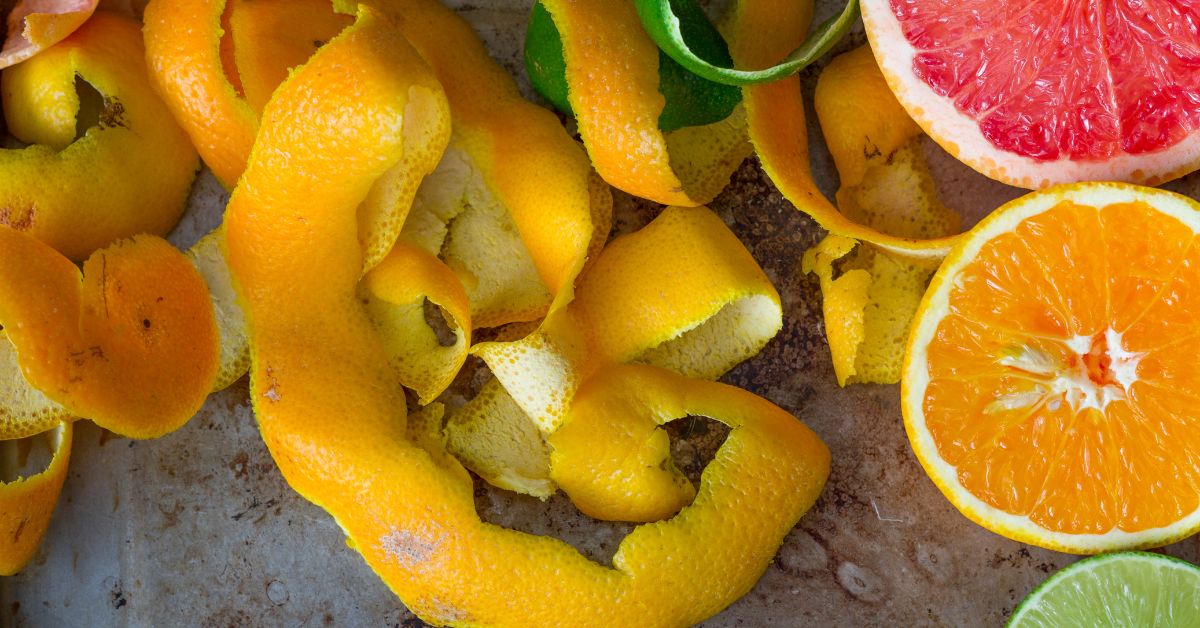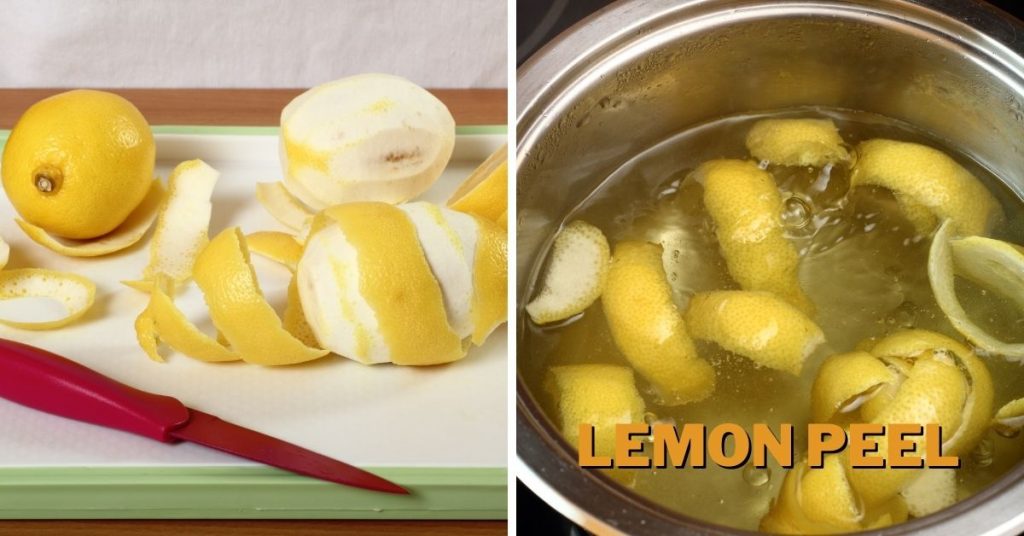Benefits of Boiling Grapefruit and Lemon Peels + Uses

We are accustomed to throwing away the grapefruit and lemon peel and only using the inside of the fruit, but that is a big mistake. The grapefruit and lemon peels contain the most concentrated vitamins found in these fruits, and we should think twice before throwing these goldmines. Boiled grapefruit and lemon peels bring about many benefits whether you eat them or use them otherwise. So what are the benefits of boiled grapefruit and lemon peels?
Grapefruit and lemon peels contain more fiber and phytochemicals than pulp. The amount of vitamin C in the peel is more concentrated than in the fruit. The peel also contains antioxidants and minerals. The water of boiled grapefruit and lemon can be used in many ways as a cleaner, face serum, tea, or deodorant.
Grapefruits and lemons are known to be highly beneficial for the health and are recommended to be eaten frequently, especially since they are available all year round. However, grapefruit and lemon peel offer many benefits and many uses. So, in this article, I will explain the benefits and uses of broiled grapefruit and lemon peel.
What Are the Benefits of Boiling Grapefruit Peels?
Not only will your kitchen smell amazing and fresh, but boiling grapefruit peels also brings many other benefits. Grapefruit peel contains essential oils, which are famous for being healthy. These essential oils are produced and stored in the peel. [1]
When you boil the grapefruit peel, the essential oils are released into the water, and drinking that water as tea or ice tea means consuming the essential oils. The grapefruit essential oils have an anti-inflammatory effect on the organism; they boost immunity and have even proven to effectively prevent cancer.
The soluble fiber that grapefruit peel also contains in large quantities is very beneficial for blood sugar regulation, so if you regularly drink grapefruit peel water, you may experience a better-balanced metabolism.
Vitamin C, which is known to be a very powerful antioxidant, is also contained in the grapefruit peel in significant amounts; therefore, you may get smoother skin and an overall healthier look.
In addition to turning the peel water into tea, you can use the boiled peels to make candied peels. Just roll them in some sugar and use them as a snack or as a decoration for another dessert. You can also let the boiled peels dry and store them for other purposes, such as peel mill face masks or use them as an addition to teas or other drinks.
What Are the Benefits of Boiling Lemon Peels?
Boiling lemon peels are slightly more popular than boiling grapefruit peels, especially because boiled lemon peels are widely used in homemade beauty products, which doesn’t mean that the health benefits are any lesser.
Health-wise, boiled lemon peel and peel water have immense benefits for the immune system due to the vitamin c as well as the fiber contained in the peel. [2] Also, the nutrients from boiling lemons can provide a nice boost to weight loss teas like All Day Slimming Tea, which is packed with lemongrass and other natural ingredients to help you achieve your health goals.
Lemon peel, both boiled and fresh, has an immense anti-inflammatory and anti-fungal effect, which means it can soothe any inflammatory processes in the body you may not even be aware of. Also, boiled lemon peel is beneficial for oral health, as it protects against cavities and sores in the mouth.
Like grapefruit peels, lemon peels also can regulate blood sugar, meaning that you’ll end up with better-balanced metabolism and better heart health. Boiled lemon peels have also shown effective in regulating high cholesterol and high blood pressure.
Not only can your health and appearance benefit from boiled lemon peel, but your house could too. Peel water is considered to be one of the most effective all-purpose cleaners, removing bacteria and dirt even better than the store-bought ones. Also, you can dry the peels and turn them into an air freshener or use the peel water to spray freshness into every room.

What Happens When You Boil Grapefruit Peels and Lemon Peels?
The boiling process extracts the nutrients from the grapefruit and lemon peels. Therefore all the treasures stored inside the peel, such as vitamin C, essential oils, fiber, and phytochemicals, are being released into the boiling water.
However, boiling does not suck all the nutrients from the lemon and grapefruit peels; some will remain in the peel, so by boiling the lemon and grapefruit peels, you simply transfer the nutrients and divide them into two places.
Still, boiling water could be damaging to the nutritional value. Therefore, the boiling should be kept at a minimum, just enough to soften the peels. The peels are most nutritious when they are freshly peeled off the fruit, but, unfortunately, they can be harmful as they also contain elements that may be toxic to the organism.
Therefore, boiling is not only to soften the peels and produce peel water but also to eliminate those potentially harmful substances contained in the peel. Another reason why boiling the peels is preferred to disinfect the peels of possible toxins they encountered during the period the fruit grew.
You can’t always be sure what kind of substances the lemon or grapefruit tree was exposed to, so boiling the peel is necessary to prevent you from ingesting whatever is stuck on that surface.
Does Boiling Lemons Destroy Vitamin C?
Boiling lemons does not destroy the vitamin C but reduces it. As with any type of thermal processing, here, too, you can expect a decrease in the nutrient department. However, that does not mean that the boiled lemons will be deprived of everything they have to offer when fresh.
Luckily, lemons are so rich in vitamin C that even though some amount is reduced by boiling them, there is still plenty.
Still, the more you boil the lemons, the less vitamin C they retain, so see that you don’t go overboard, but boil them just enough to soften them, so five minutes at the most. On the bright side, after you boil the lemons, the water is also rich in nutrients.
What Do Grapefruit and Lemon Do to Our Bodies?
Before I start explaining the benefits lemon and grapefruit and lemon bring to the body, I need to mention that there is such a thing as too much lemon and too much grapefruit, so pace yourself. Also, grapefruit and lemon can interfere with the body’s absorption of certain medications, so if you are on some kind of doctor-prescribed therapy, consult with your doctor on whether and how much of these you can have.
Otherwise, the health benefits of lemon and grapefruit are vast and countless. The essential oils of the grapefruit are known to boost immunity and cure bacterial infections, such as E-Coli.
Both lemon and grapefruit help alkalize the body, making it a hostile environment for inflammations and, even more, cancer cells. Grapefruit and lemon both regulate blood sugar and help reduce blood pressure, so introducing them into your daily diet can result in an overall better-balanced organism.
Lemon and grapefruit have also proven effective for weight loss, so replacing your snack with a slice of grapefruit or lemon and drinking lemon water instead of regular can help you get rid of a few pounds.
The large quantities of vitamin C contained in lemon and grapefruit are a powerful anti-aging ally riding the body of free radicals and leaving your skin looking healthier and younger than it used to be.
Digestion also benefits from regular consumption of lemons and grapefruits. The fiber in these magic fruits speeds up digestion, increasing the body’s natural detoxification.

How Can You Use Boiled Lemon and Grapefruit Peels?
As I already mentioned, boiled grapefruit and lemon peels have countless uses. The simple way to use the peels would be to eat them, but I doubt you’ll like the gooey consistency. Therefore, you can roll them in sugar and eat them as a crunchy snack or a decoration.
You can dip them in honey and pop them in the fridge. Half an hour later, you’ll be able to enjoy honey-glazed healthy peels.
To prolong their shelf-life, you can dry the peels without boiling them or after you boil them. This way, you can store the peels for up to six months. During this time, you can throw a peal or two into your tea, juice, water, or another drink to add some flavor to it.
You can also make a peel mill and use it to sprinkle it over your desserts, or mix it with honey or oil and turn it into a DIY beauty face mask.
Turning the peels into an air freshener is another excellent use of grapefruit and lemon peels. Place the dried peels into a bowl and let them do their magic. If you like doing arts and crafts, you can turn the peel into a candle holder and let it aromatize your room as the candle burns.
If you are into making your own cleaners, you can pop some peels into your mixture for a lovely natural scent.
How Can You Use the Water after Boiling Lemon and Grapefruit Peels?
Just like the peels, the water also has multiple purposes. The most obvious use is to drink it. You can drink it plain as it is or add some flavorings and turn it into an exotic beverage.
Pop it in the fridge to chill and have a nice refreshing drink that you can add to other alcoholic or non-alcoholic beverages. Another great use of the water is to turn it into popsicles. Pour it into the popsicle molds and freeze it; you’ll enjoy an all-natural frozen snack a few hours later.
Since the peel water is packed with vitamin C, you can use it as a face serum to brighten and clear up your face. You can mix the water with some baking soda and vinegar, and you’ll get a very effective stain remover or an all-purpose cleaner that will make your home shiny, leaving it smelling natural and fresh.
Spray some water around your house to get rid of those nasty microbes flying around undetected.
How to Boil Lemon and Grapefruit Peels?
When boiling lemon and grapefruit peels, it is essential to keep track of the time and don’t leave them too long. Place them in warm water and gradually increase the temperature until it boils. Keep the peels in the boiling water for up to five minutes, and then remove the pot from the hot plate.
Leave the peels for another ten minutes, steep them in the pot, and remove them. Let them dry up, and use them as you need them.
